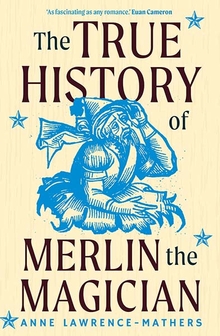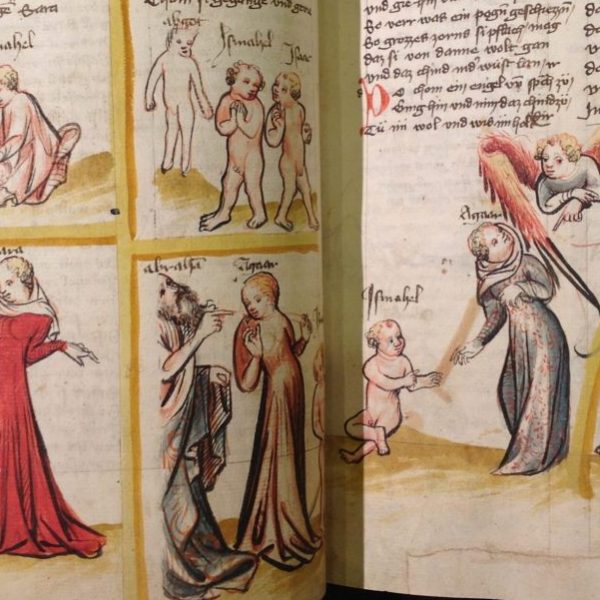The Discovery of Merlin
Anne Lawrence-Mathers—
Merlin the Magician, like his name, was a creation of the twelfth century. This is no attempt to deny the existence of earlier Welsh sources, but Myrddin the princely bard of the Cymry, driven mad by a disastrous battle and expressing himself in cryptic poetry, needs to be separated from the twelfth-century Merlin. The latter is the shape changer, star reader, prophet and creator of King Arthur who is still familiar to modern audiences. The story of the search for the ‘original’ Myrddin has been told in other books. Merlin, the magus of the high Middle Ages, deserves one of his own. This medieval Merlin was not a figure of legend but an apparently documented, long-lost maker of British history. This Merlin’s impact has been such that, despite his gradual move from the pages of history to those of literature, the key elements of his magical powers have not changed significantly. The name of Merlin is still instantly recognizable, and is still associated with that of the great and tragic King Arthur. The events of this Merlin’s life, as first told by a cleric who called himself Geoffrey of Monmouth, are both familiar and fascinating.
Geoffrey’s Merlin was the semi-human child of a Welsh Christian princess and a demon. He could see into the depths of the earth, and could interpret the motions of the stars; he could also, if he chose, reveal his knowledge to powerful kings, although he was never under their control. Merlin was the great, magical engineer who brought Stonehenge from Ireland to England, and his skill with potions was so great that he could transform his protégés from one shape to another. He could communicate with animals and birds, and could make them do his will. Like a biblical prophet he was also an infallible interpreter of dreams. In other words, he was master of all the forces, and of all the languages and meanings, of the earth and of the stars above it. But his powers went even beyond this, for as a prophet he had knowledge of the distant past and of the whole of the future, at least for Britain. His prophecies were an instant sensation: copies were in high demand, and commentaries and interpretations multiplied rapidly.
This is the Merlin who became the archetype of the great magician, in control of superhuman knowledge as well as power. Unlike shaman figures, he does not merge into the natural world – instead he interprets and dominates it. His enormous appeal derives from bringing together the magical traditions of the ancient world, the Christian Church, and the Celtic past as re-imagined in the medieval court. Even in the nineteenth century, this Merlin remained a potent and remarkably unchanging figure, although he had moved from history to the realm he still occupies: that of literature. This power as a symbolic figure is inseparable from his historical complexity – from the fact that he was discovered, during the twelfth-century renaissance, as a real person who had lived just as classical civilization was dying. Merlin was not an alien figure from a wild, Dark Age past. Rather, he was a prophet-magician who had helped to shape a world of great empires, and was master of both natural forces and advanced technology. Merlin had an immediate impact in medieval Europe. He was accepted as a genuine historical figure, and he brought together key themes in both magic and politics. His powers of prophecy were perhaps of greatest importance in the Middle Ages. But he was also an embodiment of forms of magic that remained serious and real throughout the renaissance as well as the medieval period. This enduring power could not have been achieved without two necessary conditions. The first was the fact that he was accepted as real for over four hundred years. The second was his capacity to offer examples of all the major forms of magic practised down to the seventeenth century. His impact is demonstrated by his extraordinary longevity as an archetype of a great magician. It is this unique status which makes Merlin so important as a subject for historical study.
From The True History of Merlin the Magician by Anne Lawrence-Mathers. Published by Yale University Press in 2020. Reproduced with Permission.
Anne Lawrence-Mathers is professor of medieval history at the University of Reading.
Further Reading:



























